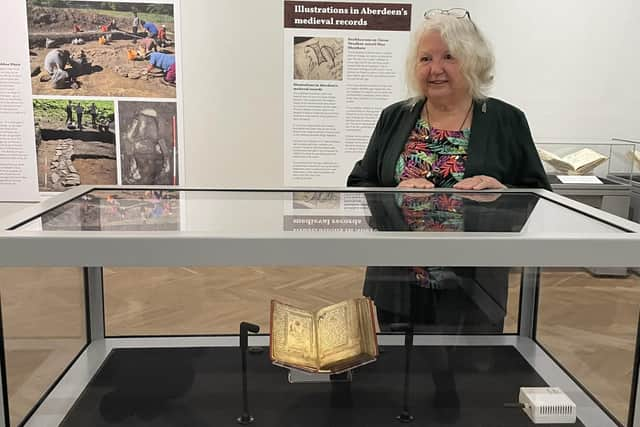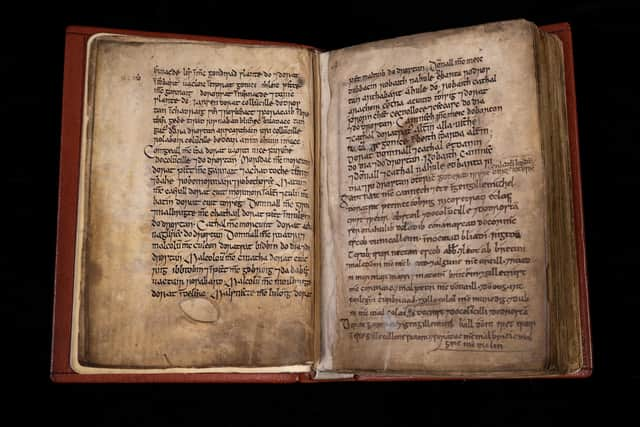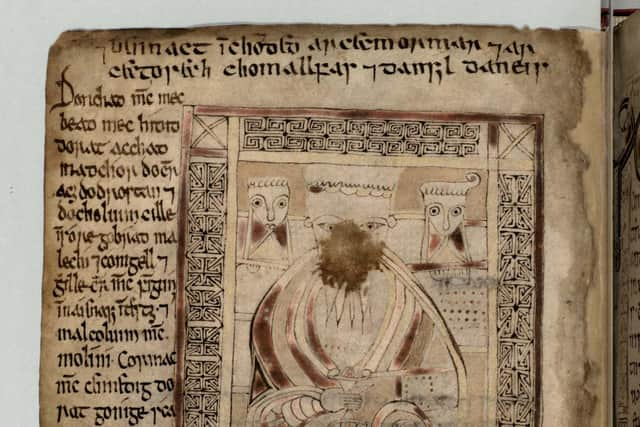Scotland's 'oldest surviving manuscript' comes home after hundreds of years
and live on Freeview channel 276
The Book of Deer, which dates from around 850AD and is believed to be Scotland’s oldest surviving manuscript, is now on show in Aberdeen after a 25-year community campaign to highlight its importance to the North East.
The manuscript is believed to have been used by monks at the now long-vanished Deer Monastery, set up in the 6th Century on the banks of the River Ugie near Old Deer in Aberdeenshire.
Advertisement
Hide AdAdvertisement
Hide AdIt contains the oldest examples of Gaelic writing in Scotland, which were added to the pages around 1100 AD, but what happened to the Book of Deer thereafter is little known until it was bought by George I and gifted to Cambridge University in 1715.
Now, following discussions between the community of Old Deer, the university library and Aberdeen City Council, the book has returned to the North East on temporary loan.
Anne Simpson, chair of the Book of Deer Project, said it felt “almost unreal” seeing the Book of Deer on show at Aberdeen Art Gallery.
"I’m absolutely delighted it is here. It’s been a long haul and it’s been a dream of the project for a long time. Personally, it just feels fantastic to be able to work with our partners to get it here and to have it here in the North East.


Advertisement
Hide AdAdvertisement
Hide Ad“It almost feels unreal, although I have seen it and know it is here.”
Ms Simpson described the Book of Deer as a “very special, very precious little book”, which measures around 15 centimetres in length.
She added: “It’s unusual in the sense that it is small, it is very personal. You can imagine a monk with this in his habit, going out into the community to heal the sick.


“The drawings inside and the additions in Gaelic are telling the history of the bit of the country that I live in. That’s what takes it to Deer, the places that are mentioned in the book are local.
Advertisement
Hide AdAdvertisement
Hide Ad“I think the Gaelic inscriptions make it possibly Scotland’s most important surviving manuscript. I do think it is one of our special treasures and people will value it once they see it. Once they see it, they will love it as much as I do.”
Ms Simpson first saw the Book of Deer in Cambridge in 2019, with the university immediately open to the idea that it could go on loan with an agreement reached with Aberdeen City Council.
"There is still a bit of disbelief that it is here,” Ms Simpson added.


Various theories surround what happened to the book after it left Aberdeenshire, with some suggesting it was taken to England by Edward II in the 14th Century or that it vanished following the arrival of Oliver Cromwell in the early 1600s.
Advertisement
Hide AdAdvertisement
Hide AdA programme of events to celebrate the manuscript’s homecoming will now get underway, with archaeologist Ali Cameron to return to the Old Deer area next month to continue thee search for the remains of the Pictish-era monastery.
The Lord Provost of Aberdeen, councillor David Cameron, said: “There can be no doubt that the ‘splendid little book’ is one of Scotland’s greatest treasures.”
Comment Guidelines
National World encourages reader discussion on our stories. User feedback, insights and back-and-forth exchanges add a rich layer of context to reporting. Please review our Community Guidelines before commenting.
